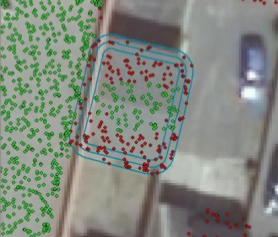J.M.Pearce (talk | contribs) m (→See also) |
J.M.Pearce (talk | contribs) m (→See also) |
||
| Line 16: | Line 16: | ||
A case study is presented as an example of the methodology. Experience from the case study such as the trade-off between time consumption and data quality are discussed to highlight a need for connectivity between demographic information, electrical engineering schemes and GIS and a typical factor of solar useful roofs extracted per method. Finally, conclusions are developed to provide a final methodology to extract the most useful information from the lowest resolution and least comprehensive data to provide solar electric assessments over large areas, which can be adapted anywhere in the world. | A case study is presented as an example of the methodology. Experience from the case study such as the trade-off between time consumption and data quality are discussed to highlight a need for connectivity between demographic information, electrical engineering schemes and GIS and a typical factor of solar useful roofs extracted per method. Finally, conclusions are developed to provide a final methodology to extract the most useful information from the lowest resolution and least comprehensive data to provide solar electric assessments over large areas, which can be adapted anywhere in the world. | ||
== Application of LiDAR assessment of rooftop PV == | |||
* The [http://en.mapdwell.com/ Mapdwell Project] enables communities with information that will drive [[sustainable practices]], [[community awareness]], [[energy efficiency]], and [[smart development]] through the aggregate effort of individuals. By transforming accurate, open, and unbiased information into education and action, the project proposes an organic solution to the fossil fuel dilemma. Their first application is LiDAR mapping for [[solar photovoltaic]] systems on rooftops. Check out their map of Cambridge...and soon other cities [http://en.mapdwell.com/solarsystem/cambridge here]. | |||
==See also== | ==See also== | ||
Revision as of 20:04, 8 July 2013
The Application of LiDAR to Assessment of Rooftop Solar Photovoltaic Deployment Potential on a Municipal District Unit
Source: Ha T. Nguyen, Joshua M. Pearce, Rob Harrap, and Gerald Barber, “The Application of LiDAR to Assessment of Rooftop Solar Photovoltaic Deployment Potential on a Municipal District Unit”, Sensors, 12, pp. 4534-4558 (2012). Free open access
Abstract
A methodology is provided for the application of Light Detection and Ranging (LiDAR) to automated solar photovoltaic (PV) deployment analysis on the regional scale. Challenges in urban information extraction and management for solar PV deployment assessment are determined and quantitative solutions are offered. This paper provides the following contributions: (i) a methodology that is consistent with recommendations from existing literature advocating the integration of cross-disciplinary competences in remote sensing (RS), GIS, computer vision and urban environmental studies; (ii) a robust methodology that can work with low-resolution, incomprehensive data and reconstruct vegetation and building separately, but concurrently; (iii) recommendations for future generation of software.
A case study is presented as an example of the methodology. Experience from the case study such as the trade-off between time consumption and data quality are discussed to highlight a need for connectivity between demographic information, electrical engineering schemes and GIS and a typical factor of solar useful roofs extracted per method. Finally, conclusions are developed to provide a final methodology to extract the most useful information from the lowest resolution and least comprehensive data to provide solar electric assessments over large areas, which can be adapted anywhere in the world.
Application of LiDAR assessment of rooftop PV
- The Mapdwell Project enables communities with information that will drive sustainable practices, community awareness, energy efficiency, and smart development through the aggregate effort of individuals. By transforming accurate, open, and unbiased information into education and action, the project proposes an organic solution to the fossil fuel dilemma. Their first application is LiDAR mapping for solar photovoltaic systems on rooftops. Check out their map of Cambridge...and soon other cities here.


